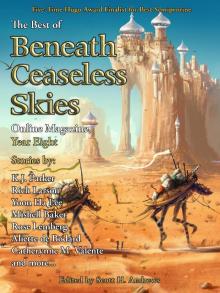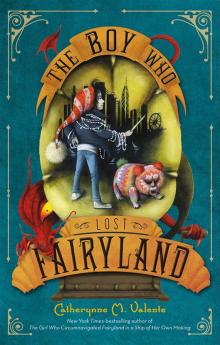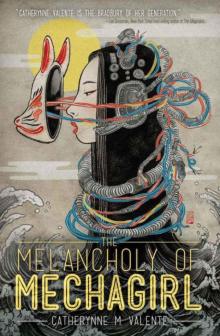


How Democracies Die
Steven Levitsky
In addition to the decline in forbearance, the Bush presidency also saw some early challenges to the norm of mutual toleration. To his great credit, President Bush did not question the patriotism of his Democratic rivals, even when anti-Muslim hysteria in the aftermath of the September 11 attacks created an opportunity to do so. But Fox News commentators and influential radio talk-show hosts used the moment to imply that Democrats lacked patriotism. Commentators began at times to link Democrats to Al Qaeda—as Rush Limbaugh did in 2006, when he accused Senator Patrick Leahy of “taking up arms for Al Qaeda” after Leahy probed Supreme Court nominee Samuel Alito on the Bush administration’s use of torture.
Among the most brazen agents of partisan intolerance in the early 2000s was Ann Coulter. Coulter wrote a series of bestselling books attacking liberals and Democrats in a McCarthyite voice. The books’ titles speak for themselves: Slander (2002); Treason (2003); Godless (2006); Guilty (2009); Demonic (2011); Adios, America! (2015). Treason, published around the time of the U.S. invasion of Iraq, defends Joseph McCarthy and embraces his tactics. The book claims that anti-Americanism is “intrinsic to [liberals’] entire worldview” and accuses liberals of having committed “fifty years of treason” during the Cold War. While doing publicity for Treason, Coulter declared, “There are millions of suspects here….I am indicting the entire Democratic Party.” The book spent thirteen weeks on the New York Times bestseller list.
The 2008 presidential election was a watershed moment in partisan intolerance. Through the right-wing media ecosystem—including Fox News, America’s most-watched cable news channel—Democratic presidential candidate Barack Obama was cast as Marxist, anti-American, and secretly Muslim. The campaign even featured a sustained effort to link Obama to “terrorists” like Bill Ayers, a Chicago-area professor who had been active in the Weather Underground in the early 1970s (Ayers had hosted a gathering for Obama in 1995 as he prepared his Illinois state Senate bid). The Fox News program Hannity & Colmes discussed the Ayers story in at least sixty-one different episodes during the 2008 campaign.
But what was especially troubling about the 2008 campaign is that the right-wing media’s rhetoric of intolerance was picked up by leading Republican politicians. Tom DeLay, for example, declared that “unless Obama proves me wrong, he’s a Marxist,” while Steve King, a Republican congressman from Iowa, called Obama “anti-American” and warned that he would lead America into “totalitarian dictatorship.” Although Republican presidential candidate John McCain did not employ such rhetoric, he nevertheless selected a running mate, Sarah Palin, who did. Palin embraced the Bill Ayers story, declaring that Obama had been “palling around with terrorists.” On the campaign trail, Palin told supporters that Obama “launched his political career in the living room of a domestic terrorist!,” continuing: “This is not a man who sees America the way you and I see America….I’m afraid this is someone who sees America as imperfect enough to work with a former domestic terrorist who had targeted his own country.” Her racially coded speeches elicited cries of “Treason!,” “Terrorist!,” and even “Kill him!” from crowds.
—
Barack Obama’s 2008 presidential victory revived hopes for a return to a more civilized brand of politics. On election night, as he gathered his family onstage in Chicago, the president-elect spoke generously, congratulating McCain on a heroic career of contributions to America. Earlier, in Phoenix, Arizona, McCain had delivered a gracious concession speech in which he described Obama as a good man who loved his country, and wished him “Godspeed.” It was a textbook case of postelection reconciliation. But something was not right in Phoenix. When McCain mentioned Obama, the crowd booed loudly, forcing the Arizona senator to calm them down. Many looked over at Sarah Palin, who stood off to the side in grim silence. Although the stage belonged to McCain that evening, his tradition-bound plea for Republicans to “bridge our differences” with the new president seemed to sit uneasily with those who had gathered to hear him.
Rather than ushering in a new era of tolerance and cooperation, the Obama presidency was marked by rising extremism and partisan warfare. Challenges to President Obama’s legitimacy, which had begun with fringe conservative authors, talk-radio personalities, TV talking heads, and bloggers, was soon embodied in a mass political movement: the Tea Party, which started to organize just weeks after President Obama’s inauguration. Although the Tea Party framed its mission in terms of such traditional conservative ideas as limited government, low taxes, and resistance to health care reform, its opposition to Obama was far more pernicious. The difference? The Tea Party questioned President Obama’s very right to be president.
Two threads that broke with established norms consistently ran through Tea Party discourse. One was that President Obama posed a threat to our democracy. Just days after Obama’s election, Georgia congressman Paul Broun warned of a coming dictatorship comparable to Nazi Germany or the Soviet Union. He later tweeted, “Mr. President, you don’t believe in the Constitution. You believe in socialism.” Iowa Tea Partier Joni Ernst, who would soon be elected to the U.S. Senate, claimed that President Obama “has become a dictator.”
The second thread was that Barack Obama was not a “real American.” During the 2008 campaign, Sarah Palin had used the expression “real Americans” to describe her (overwhelmingly white Christian) supporters. This was central to the Tea Party’s campaign against President Obama, as followers stressed repeatedly that he did not love America or share American values. According to Tea Party activist and radio host Laurie Roth:
This was not a shift to the Left like Jimmy Carter or Bill Clinton. This is a worldview clash. We are seeing a worldview clash in our White House. A man who is a closet secular-type Muslim, but he’s still a Muslim. He’s no Christian. We’re seeing a man who’s a Socialist Communist in the White House, pretending to be an American.
Mass e-mails sent rumors and innuendo through Tea Party circles, including one with a photograph showing President Obama carrying a book, The Post-American World, by CNN host Fareed Zakaria. The e-mail read: “THIS WILL CURDLE YOUR BLOOD!!! The name of the book Obama is reading is called The Post-American World and it was written by a fellow Muslim.”
The rhetoric wasn’t limited to Tea Party activists. Republican politicians also questioned President Obama’s “Americanness.” Former Colorado congressman Tom Tancredo declared, “I do not believe Barack Obama loves the same America that I do, the one the founders put together.” Newt Gingrich, who attempted a political comeback and sought the GOP presidential nomination in 2012, called Obama “the first anti-American president.” And at a private fund-raising dinner for Wisconsin governor Scott Walker in February 2015, former New York City mayor Rudy Giuliani openly questioned the sitting president’s patriotism, declaring: “I do not believe, and I know this is a horrible thing to say, but I do not believe that the president loves America.”
If the Tea Party hammered home the accusation that President Obama did not love America, the “birther movement” went even further, questioning whether he was born in the United States—and thus challenging his constitutional right to hold the presidency. The idea that Obama was not even from America first circulated in the blogosphere during his 2004 Senate campaign and resurfaced in 2008. Republican politicians discovered that questioning President Obama’s citizenship was an easy way to elicit crowd enthusiasm at public appearances. So they began to do it. Colorado representative Mike Coffman told supporters, “I do not know if Barack Obama was born in the United States of America….But I do know this, that in his heart, he’s not an American. He’s just not an American.” At least eighteen Republican senators and House members were called “birther enablers” because of their refusal to reject the myth. U.S. Senators Roy Blunt, James Inhofe, Richard Shelby, and David Vitter, former vice presidential candidate Sarah Palin, and 2012 presidential candidate Mike Huckabee all made statements endorsing or encouraging the birther campaign.
The most notorious birther of a
ll was Donald Trump. In the spring of 2011, as he pondered a 2012 presidential bid, Trump told the Today show that he had “doubts” about whether President Obama was a natural-born U.S. citizen. “I have people who actually have been studying it,” Trump claimed, “and they cannot believe what they are finding.” Trump became America’s most prominent birther, appearing repeatedly on television news programs to call on the president to release his birth certificate. And when Obama’s certificate was made public in 2011, Trump suggested it was a forgery. Although Trump opted not to run against Obama in 2012, his high-profile questioning of President Obama’s nationality gained him media attention and endeared him to the Republicans’ Tea Party base. Intolerance was politically useful.
Such attacks have a long and dishonorable pedigree in American history. Henry Ford, Father Coughlin, and the John Birch Society all adopted similar language. But the challenges to Obama’s legitimacy were different in two important ways. First, they were not confined to the fringes, but rather accepted widely by Republican voters. According to a 2011 Fox News poll, 37 percent of Republicans believed that President Obama was not born in the United States, and 63 percent said they had some doubts about his origins. Forty-three percent of Republicans reported believing he was a Muslim in a CNN/ORC poll, and a Newsweek poll found that a majority of Republicans believed President Obama favored the interests of Muslims over those of other religions.
Second, unlike past episodes of extremism, this wave reached into the upper ranks of the Republican Party. With the exception of the McCarthy period, the two major parties had typically kept such intolerance of each other at the margins for more than a century. Neither Father Coughlin nor the John Birch Society had the ear of top party leaders. Now, open attacks on President Obama’s legitimacy (and later, Hillary Clinton’s) were carried out by leading national politicians. In 2010, Sarah Palin advised the Republicans to “absorb as much of the Tea Party movement as possible.” They did. Republican senators, governors, and even presidential candidates mirrored the language of the fringe, and they were joined by Republican donors who viewed the Tea Party movement as an opportunity to push the GOP into a harder line against the Obama administration. Well-funded organizations such as Freedom Works and Americans for Prosperity and political action committees such as the Tea Party Express and Tea Party Patriots sponsored dozens of Republican candidates. In 2010, more than one hundred Tea Party–backed candidates ran for Congress, and more than forty were elected. By 2011, the House Tea Party Caucus had sixty members, and in 2012, Tea Party–friendly candidates emerged as contenders for the Republican presidential nomination. In 2016, the Republican presidential nomination went to a birther, at a national party convention in which Republican leaders called their Democratic rival a criminal and led chants of “Lock her up.”
For the first time in many decades, top Republican figures—including one who would soon be president—had overtly abandoned norms of mutual toleration, goaded by a fringe that was no longer fringe. By the end of the Obama presidency, many Republicans embraced the view that their Democratic rivals were anti-American or posed a threat to the American way of life. This was dangerous territory. Such extremism encourages politicians to abandon forbearance. If Barack Obama is a “threat to the rule of law,” as Senator Ted Cruz claimed, then it made sense to block his judicial appointments by any means necessary.
Rising partisan intolerance thus led to an erosion of institutional forbearance during the Obama years. Immediately after President Obama’s election, a group of young House members, led by Kevin McCarthy, Eric Cantor, and Paul Ryan, held a series of meetings to develop a strategy to confront the new administration. The self-styled “Young Guns” decided to make the GOP the “Party of No.” The United States was mired in the deepest economic crisis since the Great Depression, yet Republican legislators planned to not cooperate with the new administration. Senate Minority Leader Mitch McConnell echoed this sentiment when he declared that the “single most important thing we want to achieve [in the Senate] is for President Obama to be a one-term president.” So McConnell, too, embraced obstructionism. The very first bill in front of the Senate in January 2009 was the innocuous Public Land Management Act—a bipartisan conservation measure to secure two million acres of wilderness in nine states. As if to send a message, the Republicans filibustered it.
This behavior became standard practice. Senate obstructionism spiked after 2008. Senate “holds,” traditionally used to delay a floor debate for up to a week to allow senators extra time to prepare, became “indefinite or permanent vetoes.” A stunning 385 filibusters were initiated between 2007 and 2012—equal to the total number of filibusters in the seven decades between World War I and the end of the Reagan administration. And Senate Republicans continued using the judicial confirmation process as a partisan tool: The confirmation rate of presidential circuit court appointments, which had been over 90 percent in the 1980s, fell to barely 50 percent under President Obama.
The Democrats responded with norm breaking of their own. In November 2013, Senate Democrats voted to eliminate the filibuster for most presidential nominations, including federal judicial (but not Supreme Court) nominees, a move so extreme it was widely referred to as the “nuclear option.” Republican senators criticized the Democrats’ “raw exercise of political power,” but President Obama defended it, claiming that the filibuster had been transformed into a “reckless and relentless tool” of obstruction and adding that “today’s pattern of obstruction…just isn’t normal; it’s not what our founders envisioned.”
President Obama also responded with norm breaking—in the form of unilateral executive actions. In October 2011, the president presented what would become his mantra for achieving policy goals: “We can’t wait for an increasingly dysfunctional Congress to do its job,” he told an audience in Nevada. “Whenever they won’t act, I will.” Obama began to use executive authority in a way he might not have expected to before coming into office. In 2010, in the face of Congress’s failure to pass a new energy bill, he issued an “executive memorandum” instructing government agencies to raise fuel efficiency standards for all cars. In 2012, in response to Congress’s inability to pass immigration reform, he announced an executive action to cease deportation of illegal immigrants who came to the United States before the age of sixteen and were either in school or were high school graduates or military veterans. In 2015, President Obama responded to Congress’s refusal to pass legislation to combat climate change by issuing an executive order to all federal agencies to reduce greenhouse gas emissions and use more renewable energy. Unable to get Senate consent for a nuclear treaty with Iran, the Obama administration negotiated an “executive agreement,” which, because it was not formally a treaty, did not require Senate approval. The president’s actions were not out of constitutional bounds, but by acting unilaterally to achieve goals that had been blocked by Congress, President Obama violated the norm of forbearance.
President Obama’s efforts to circumvent Congress triggered further escalation. In March 2015, the Republican Senate leadership publicly encouraged U.S. states to defy the president’s authority. In an op-ed in the Lexington Herald Leader, Mitch McConnell urged states to ignore Obama’s regulatory order limiting greenhouse gas emissions. It was a stunning undermining of federal authority. The following year, Arizona state legislators debated and nearly passed a bill prohibiting the state government from using any of its personnel or resources to enforce executive orders that had not been voted on by Congress. As the New York Times editorialized, “This sounds like John Calhoun’s Secessionist screed from 1828, the South Carolina Exposition and Protest.”
Three dramatic events during Obama’s presidency revealed how severely norms of forbearance had eroded. The first was the 2011 crisis over the federal debt limit. Because a failure to raise the debt ceiling could cause the U.S. government to default, destroying America’s credit rating and potentially throwing the economy into a tailspin, Congress could, in theo
ry, use the debt limit as a “hostage,” refusing to raise it unless the president met certain demands. This extraordinary brinksmanship was never seriously contemplated—before 2011. Raising the debt limit was a long-standing bipartisan practice; between 1960 and 2011 it had been done 78 times, 49 under Republican presidents and 29 under Democrats. Although the process was often contentious, leaders of both parties knew it was just political posturing.
This changed after the Republicans, pushed by a new class of Tea Party–backed representatives, gained control of Congress in 2011. Not only were they willing to use the debt limit as a hostage, many of them were willing to kill it—to “bring the whole system crashing down”—if their demands for dramatic spending cuts were not met. Likewise, Tea Party–backed Senators Pat Toomey of Pennsylvania and Mike Lee of Utah openly called for a default if President Obama did not accede to their demands. As Congressman Jason Chaffetz put it afterward, “We weren’t kidding….We would have taken it down.” Although a last-minute deal prevented a default, considerable damage had already been done. Markets responded badly, and Standard & Poor’s downgraded America’s credit rating for the first time in history.














